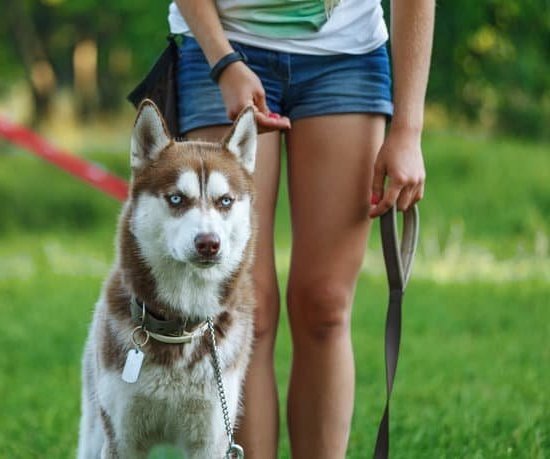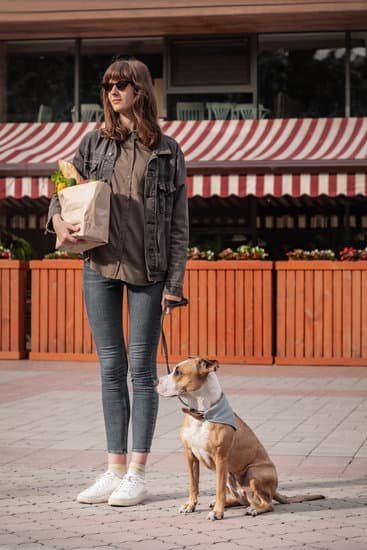The answer to this question can vary depending on a variety of factors, including the breed, age, and individual personality of the dog. In this article, we will explore the ins and outs of the house training process for dogs, including the importance of consistency and patience, different methods and techniques for house training, signs that your dog is ready for house training, common challenges and how to overcome them, as well as tips for accelerating the process.
House training a dog requires a solid understanding of the process and a considerable amount of patience. Consistency is key when it comes to establishing good habits in your furry companion. While some dogs may pick up on the routine quickly, others may take longer to grasp the concept. Factors such as breed tendencies and individual personality play a significant role in determining how long it will take for your dog to become fully house trained.
In addition to discussing the time frame for house training, we’ll also delve into different methods and techniques that owners can utilize to teach their dogs proper bathroom etiquette. By recognizing signs that indicate your dog is ready for house training and learning how to monitor progress effectively, you’ll be better equipped to celebrate milestones in your pet’s journey toward becoming a well-behaved member of your household.
Importance of Consistency and Patience in House Training
House training a dog is a process that requires a considerable amount of consistency and patience. Consistency in house training means establishing a routine for your dog and sticking to it. This includes feeding, walking, and potty breaks at the same times every day. Patience is also essential because dogs may not understand the concept of house training right away, and accidents are bound to happen.
To effectively house train your dog, it’s crucial to maintain a consistent schedule for feeding, walking, and potty breaks. Here are some tips on how to do this:
- Create a regular feeding schedule for your dog. Serve meals at the same times every day, which will help regulate their bathroom habits.
- Take your dog outside to the designated potty area frequently, especially after meals and naps.
- Use verbal cues or commands when it’s potty time. For example, saying “go potty” every time you take them out will help them associate the command with the action.
- If you work full-time or have long hours away from home, consider hiring a dog walker or asking a trusted friend or family member to help maintain the routine.
In addition to consistency in their routine, patience is crucial when house training a dog. It’s important to remember that accidents will happen during the learning process and scolding or punishing them will only set back their progress. Remaining patient and providing positive reinforcement when they do eliminate in the appropriate spot will encourage good behavior in the long run.
Factors That Influence the Time It Takes to House Train a Dog
Breed and Age
The breed and age of your dog can greatly affect how long it takes to house train them. In general, smaller breeds have smaller bladders and may need more frequent bathroom breaks, while larger breeds may be able to hold it for longer periods. Additionally, puppies will likely take longer to house train than adult dogs, as they are still learning bladder control and may have more accidents.
Previous Living Conditions
If your dog has previously lived in a shelter, with multiple owners, or in an environment where they were not properly house trained, it may take longer for them to adjust to a new routine. These dogs may have developed habits that need to be unlearned, requiring additional time and patience from their new owners.
Owner’s Dedication and Consistency
One of the most important factors that influence the time it takes to house train a dog is the dedication and consistency of the owner. A structured routine, regular potty breaks, positive reinforcement, and clear communication will all contribute to a successful house training process. If an owner is inconsistent with training or discipline, it can prolong the time it takes for a dog to learn proper bathroom etiquette.
Each of these factors plays a significant role in determining how long it will take for your dog to become fully house trained. By understanding these influences, you can better prepare for the time commitment involved in this important aspect of pet ownership.
Different Methods and Techniques for House Training
House training a dog can be a challenging and time-consuming process, but it is essential for the well-being of both the pet and the owner. There are several methods and techniques that can be used to effectively house train a dog, each with its own pros and cons. Understanding these different approaches can help you find the best method for your furry friend.
Crate Training
Crate training is one of the most popular methods for house training dogs. This technique involves using a crate or kennel to confine the dog when they are not being directly supervised. Dogs have an instinct to keep their sleeping area clean, so they are less likely to have accidents in their crate. However, it is important to ensure that the crate is not too big, as this may encourage the dog to use one end as a bathroom.
Paper Training
Another method commonly used for house training dogs is paper training. This technique involves teaching the dog to eliminate on a specific type of paper or pad placed in a designated indoor area. Over time, the pads are gradually moved closer to the door and then outside until the dog becomes accustomed to going outside to relieve themselves.
Bell Training
Bell training is another effective technique for house training dogs. This method involves teaching your dog to ring a bell when they need to go outside. By consistently associating ringing the bell with going outside, dogs can quickly learn how to communicate their need to eliminate. This method requires patience and consistency from the owner in order for it to be successful.
Each dog is unique, so it may take some trial and error before finding the best method that works for your pet. It’s important to remember that consistency, patience, and positive reinforcement are key elements in any house training approach.
Signs That Your Dog Is Ready for House Training
When it comes to house training your dog, it’s important to be able to recognize the signs that indicate they are ready for this training process. One of the most obvious signs is when your dog starts to understand basic commands such as “sit” and “stay.” This shows that they are capable of learning and following instructions, which is essential for successful house training.
Another sign that your dog is ready for house training is when they begin to show awareness of their bathroom needs. This could include barking or scratching at the door to go outside, circling or sniffing around a specific area, or even whimpering or pacing when they need to relieve themselves. These behaviors indicate that your dog is starting to understand the concept of holding their bladder and bowel movements until they are taken outside.
Additionally, if your dog has started to develop a routine in their daily activities, this can also be a sign that they are ready for house training. Dogs thrive on routine and structure, so if they have established regular eating, sleeping, and playing times, it can make the house training process much smoother.
It’s important to remember that every dog is unique, so the time it takes for them to show these signs may vary. Some dogs may exhibit readiness for house training earlier than others, so it’s crucial to be patient and observant during this process.
| Signs Your Dog Is Ready for House Training | Explanation |
|---|---|
| Understanding basic commands | Dogs capable of following instructions are ready for house training. |
| Awareness of bathroom needs | Barking at the door or circling indicate understanding of holding bowel movements. |
| Developing a routine | Dogs with established daily routines may be ready for house training. |
Common Challenges in House Training and How to Overcome Them
House training a dog can be a challenging process, and many pet owners may encounter various difficulties along the way. One common challenge is dealing with accidents inside the house. It’s important to remember that this is a natural part of the house training process, and punishment should be avoided. Instead, focus on positive reinforcement when your dog eliminates in the appropriate location. This will help them understand where they are supposed to go.
Another challenge that pet owners may face is inconsistency in their training methods. Consistency is key when house training a dog, so it’s important to establish a regular schedule for feeding, bathroom breaks, and exercise. Additionally, using consistent cues and commands will help your dog understand what is expected of them. By being consistent in your approach, you can help speed up the house training process.
Proper supervision is also crucial during the house training period. Without proper supervision, it can be difficult to intervene when necessary or provide immediate positive reinforcement for good behavior. Using baby gates or crates to confine your dog to certain areas of the house can help prevent accidents while also allowing you to keep a close eye on them.
| Common Challenges | How to Overcome Them |
|---|---|
| Dealing with accidents | Avoid punishment and focus on positive reinforcement; establish regular bathroom breaks |
| Inconsistency in training methods | Create a regular schedule for feeding, bathroom breaks, and exercise; use consistent cues and commands |
| Lack of proper supervision | Use baby gates or crates to confine your dog; keep a close eye on them to provide immediate reinforcement for good behavior |
Tips for Accelerating the House Training Process
When it comes to accelerating the house training process for your dog, consistency and patience are key. By following some helpful tips and techniques, you can help your furry friend become fully house trained in a shorter amount of time.
Here are some tips for accelerating the house training process:
- Establish a routine: Creating a consistent schedule for feeding, bathroom breaks, and playtime will help your dog understand when it’s time to go outside to eliminate. This routine will also make it easier for your dog to learn where they should go to relieve themselves.
- Use positive reinforcement: When your dog successfully goes to the bathroom outside, be sure to reward them with praise, treats, or their favorite toy. This positive reinforcement will reinforce their good behavior and encourage them to continue going outside.
- Supervise closely: Keeping a close eye on your dog during the house training process is essential. This will allow you to quickly recognize any signs that they need to go outside and prevent any accidents indoors.
By implementing these tips and techniques, you can help accelerate the house training process for your dog and reduce the amount of time it takes for them to learn where they should relieve themselves. Remember that every dog is different, so be patient and consistent as you work through this important training process.
Monitoring and Tracking Progress in House Training
One of the most important aspects of house training your dog is monitoring and tracking their progress. This involves keeping a close eye on their behavior and habits to see how they are adapting to the training process. By actively monitoring their progress, you can make adjustments to your training methods as needed and celebrate the small victories along the way.
A key aspect of monitoring your dog’s progress in house training is being observant of their bathroom habits. Keep track of when they typically go potty, whether it’s after meals, playtime, or first thing in the morning. This will help you anticipate when they are most likely to need a bathroom break and prevent accidents indoors.
In addition to tracking their bathroom habits, it’s important to observe any changes in behavior that indicate progress. For example, if your dog starts going to the door or scratching it when they need to go outside, this is a positive sign that they are learning where they should go potty. By closely monitoring these behavioral changes, you can gauge how well your dog is responding to the training and adjust your methods accordingly.
Consistently documenting and tracking your dog’s progress in a journal or log can also be helpful in identifying patterns and making informed decisions about how to continue with their training. Seeing tangible evidence of their improvement can be encouraging for both you and your furry friend, especially during moments of frustration or setbacks. Understanding how long until a dog is house trained requires carefully tracking and analyzing their progress throughout the training process.
Celebrating Milestones in Your Dog’s House Training Journey
House training a dog can be a challenging process, but it is also incredibly rewarding. Celebrating the milestones in your dog’s house training journey is an important part of the process. It not only marks the progress your dog has made, but it also reinforces positive behavior and strengthens the bond between you and your pet.
One of the most common milestones to celebrate in your dog’s house training journey is when they consistently begin to signal that they need to go outside. Whether it’s barking, scratching at the door, or standing by the door, this is a clear indication that your dog is starting to understand where they should do their business. This is a significant achievement and deserves to be celebrated with praise and maybe even a special treat.
Another milestone to celebrate is when accidents in the house become rare occurrences. This shows that your dog is starting to understand the expectations and boundaries you have set for them. While accidents may still happen occasionally during this phase, it’s important to acknowledge and praise your dog for their progress. Remember, patience and consistency are key in this process.
As you continue on this journey with your furry friend, it’s essential to stay positive and patient. Every dog is different, so the time it takes for them to become fully house trained will vary. By celebrating these milestones along the way, you’ll create a positive environment that encourages continued progress and success.
Frequently Asked Questions
How Long Does It Take to Fully House Train a Dog?
The time it takes to fully house train a dog can vary depending on the breed, age, and individual personality of the dog. On average, it may take anywhere from 4 to 6 months of consistent training for a dog to become fully house trained.
At What Point Is a Dog Considered House Trained?
A dog is considered house trained when they consistently go to the bathroom outside and do not have accidents inside the house. This means they understand where they are supposed to relieve themselves and can hold their bladder and bowels until they are taken outside.
How Do You Stop a Dog From Peeing and Pooping in the House?
To stop a dog from peeing and pooping in the house, it’s important to establish a consistent routine for bathroom breaks and reward them for going outside. Supervision is key – if you catch your dog in the act of having an accident inside, interrupt them and take them outside immediately.
Consistent positive reinforcement and patience are crucial in helping your dog learn appropriate bathroom behavior indoors.

Welcome to the blog! I am a professional dog trainer and have been working with dogs for many years. In this blog, I will be discussing various topics related to dog training, including tips, tricks, and advice. I hope you find this information helpful and informative. Thanks for reading!





